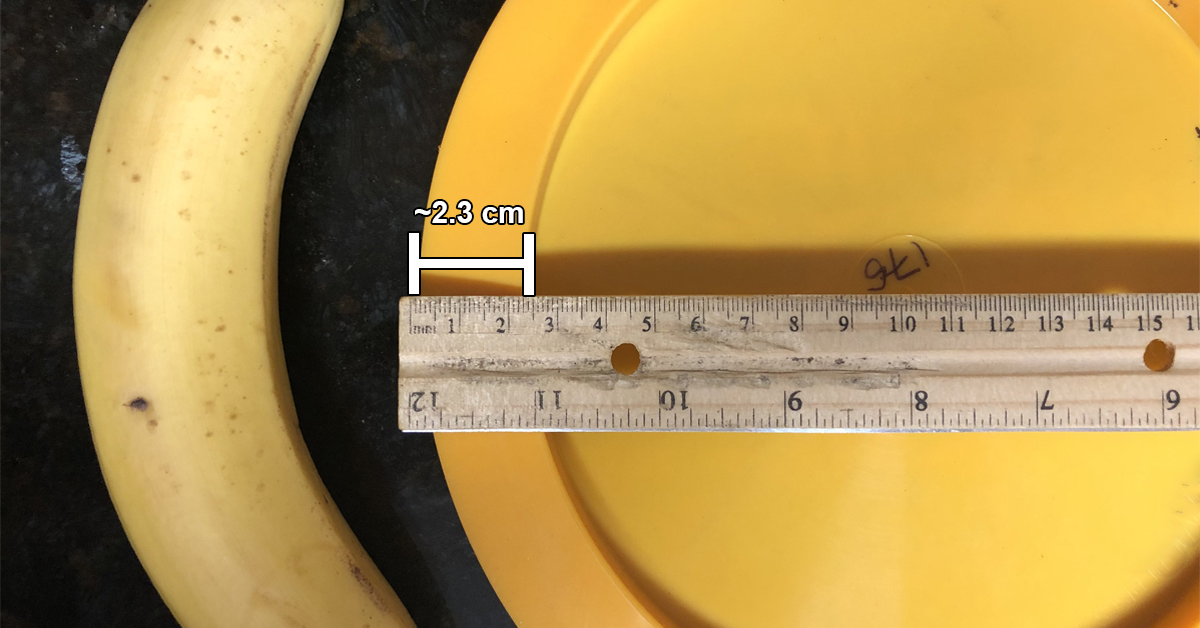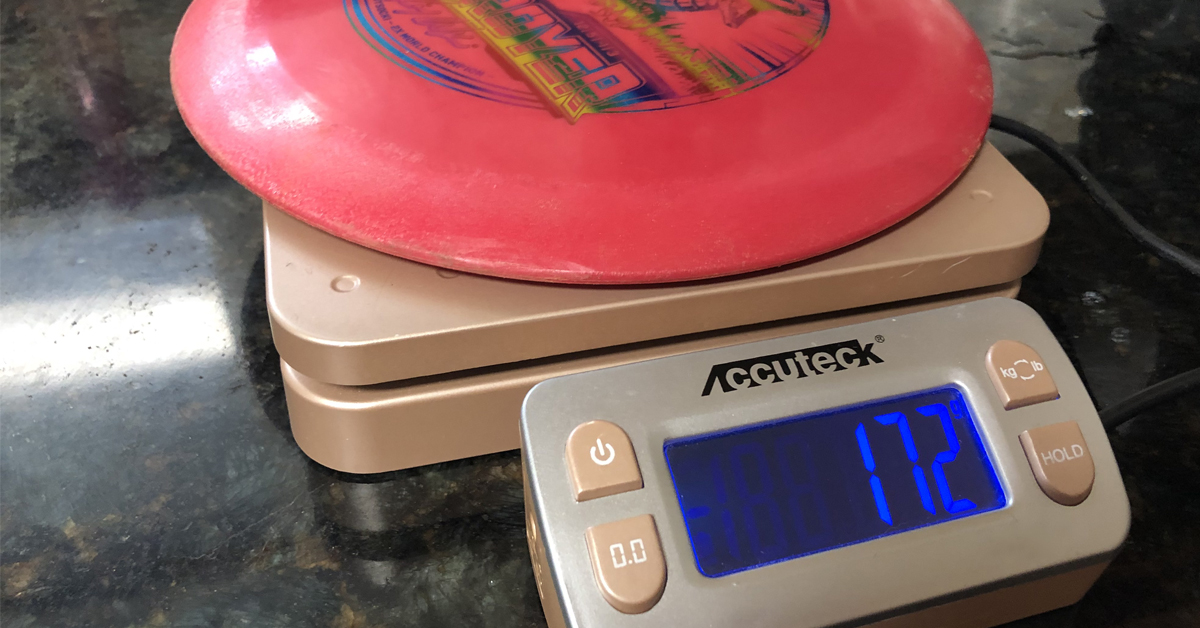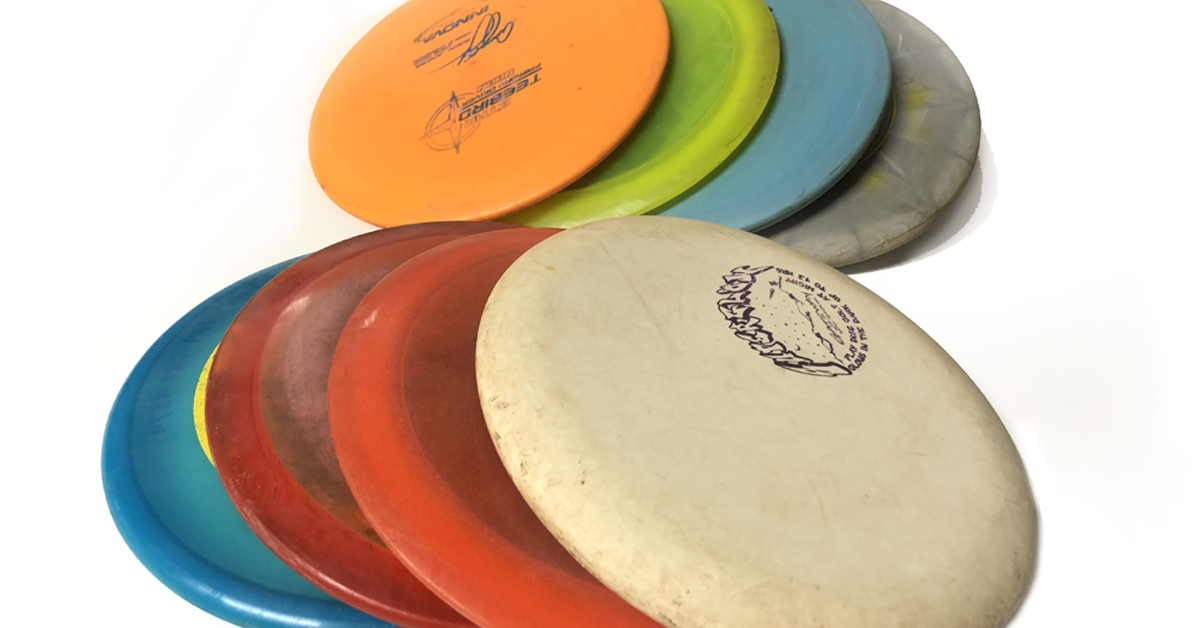In the first installment of our Disc Talk series, we gave explanations of how to identify certain features of a disc that have their own specialized vocabulary—flight plate, bead, pop or puddle top, to name a few. Here, we're doing something a little different.
The basic meanings of the disc aspects we explore below (with the possible exception of "stability") are probably clear to any disc golfer. However, the effects of those aspects on how a disc flies or beats in are, for many, shrouded in mystery. Want that shroud gone? Read on.
1. Rim Width

Imagine, if you will, a disc sawed in half. Examining the silhouette, you would find that the front very closely resembled the wing of a plane. Also known as wing length, rim width is the measurement of the wing between the outer edge of a disc and the underside flight plate (don't know what a flight plate is? Read "Disc Talk, Pt. 1").
The largest rims you will find are on maximum distance drivers. According to popular disc retailer Infinite Discs, the average rim width in this class is 0.83 inches/2.1 centimeters. While that may seem like a thick wedge to grasp, it places more weight at the edge of the disc, which greatly affects how a disc flies. Here's an explanation from Best Disc Golf Discs as to why:
The longer a disc spins, the longer it stays in the air. So the capability to spin longer – plus the lower profile of drivers which decreases wind resistance – is what puts the "distance" in distance drivers.
However, the discs don't just spin longer no matter how they're thrown. Many newer players often think that distance drivers will give them a ton more distance instantly, but it’s often the opposite. Your throwing form must impart the speed and spin for these discs to achieve their potential, and that usually takes a lot of time and practice.
Fairway drivers, also known as control drivers, have a similar silhouette to distance drivers but have rim widths around 0.66 inches/1.67 centimeters. These discs still have the sharp edge to cut through windy conditions, but don’t have as long a wing, which makes them follow straighter flight paths than distance drivers. Watch below as disc golf tipster Danny Lindahl explains why:
Mid-range discs and putters generally have much more rounded edges and thinner rims, giving them even greater precision at a sacrifice of greater wind resistance and spin potential. Disc selection is all about the balance between control and distance, and rim width is one of the key players.
2. Stability (and How Parting Lines Affect It)1
Stability is a term you will hear endlessly in any disc-related discussion. On the surface level, it might seem straightforward, but there is a lot more to it than meets the eye.
For those unsure of just what stability means in regard to disc golf, there are three major categories: understable, stable, and overstable. When a disc is described as understable, it means that after a right-handed, backhand throw with a flat release, it would typically fade right throughout its flight. Stable discs thrown the same way would go straight, and overstable discs would fade to the left.
Why do all these things happen? Essentially, as a disc flies and spins, it has a certain amount of air above and below it. If a disc has more air above than below, that applies downward force to the front (or "nose") of the disc. If it's opposite, there is upward force on the disc's nose.
This matters because, due to the nifty term "gyroscopic precession," when there is upward or downward force on a disc's nose, that force actually affects the edge 90 degrees from the front of the disc, not the nose. That means when a disc is spinning clockwise, like a right-hand backhand shot, it's the right edge that will be affected by the force on the disc's front. When a disc is spinning counter-clockwise, like a righthand forehand, it's the left edge that alters (imagine the spin pointing to the edge that will be affected).
Now, let's put it all together.
Imagine you have a righthand backhand throw spinning clockwise. If you have a disc made so that more air passes over it than under it so that the nose is exposed to more downward force, the right edge will go down. This turns the disc right and makes it understable. With the same throw but with a disc made so that more air passes under it than over it, the right edge will go up due to the upward pressure on the disc's nose. This makes a disc overstable.
A key factor in these aerodynamics is a disc’s parting line. We describe what a parting line is in "Disc Talk, pt. 1," but for a refresher, it’s the technical term for where the two halves of a disc mold meet in the molding process. Mint Discs has a fantastic write-up of how different parting lines affect stability on their website, but another clip from Best Disc Golf Discs can also give you a quick reference:
If you take a look at the images in the video, you'll see how a higher parting line puts the disc's wing in a position that means more air is likely to be under the disc, putting more upward pressure on the nose and making it more overstable. The opposite is true for lower parting lines.
These different disc designs manifest on the course as a plethora of shot shapes. You can backhand your most overstable disc on a fairway that turns sharply left and expect it to follow that fairway shape. On a longer right-turning hole, forehanding a slightly overstable disc or backhanding an understable disc can yield very similar right-turning results.
Thankfully, the aerodynamic and physical reasons for stability are mostly summed up by a disc’s four flight numbers. Parsing this quartet can be difficult at first, but we have an article explaining the basics of flight numbers if you need it. Stability is also affected by rim width, as we mentioned above, as well as the type of plastic used, which we talk about later in this article.
3. Weight
Most of us probably couldn’t guess how heavy a disc is just by feel, but the differences in disc weights are actually vital to how they perform. The PDGA specifies that discs used in competition have a maximum ratio of 8.3 grams of weight per centimeter of diameter and that they don't exceed 200 grams.
Because discs can be molded in so many different shapes that affect their aerodynamic properties, it's virtually impossible to give hard and fast rules that apply to all lightweight or all heavier discs. However, there is one thing that is undeniable: people can throw lighter discs at higher speeds than heavier ones. Think, for example, of throwing a small stone versus throwing a brick.
Why this matters is that all discs have a speed they are intended to be thrown at to achieve a specific flight pattern. This is why lighter weight discs are often recommended for newer players who are still working on technique or players with physical limitations due to things like age. They can more easily get lighter discs up to the speed they are were made to fly at.
On the other end of the spectrum are professionals who can release discs at extremely high speeds. For example, a 2019 video detailing what discs were bagged by pro Simon Lizotte – holder of the title for highest disc release speed ever officially recorded – showed that 23 of his 24 discs were over 175 grams. Lizotte and other high-powered players need this added weight because without it they could generate speeds beyond what their discs were intended for, making those discs fly in unpredictable patterns.
And, if you're wondering, we intentionally left out discussion about how disc weight affects distance. Because of factors like the wide range of player ability, wind direction and speed, and many others, it's hard to provide a succinct takeaway on the topic. But if the physics of distance are something you're interested in, take a look at this article.
4. Durability
Durability plays a huge factor in the plastic you choose. If you’re on heavily wooded courses with long holes, you know hard tree-kicks are in your near future. Picking plastic that can stand up to this arboreal abuse is important. Otherwise, you could drastically alter a disc’s flight after one or two good hucks into a tree trunk.
As a rule of thumb, durable discs are more overstable than their less-durable plastic counterparts as the hardness of their plastic blend means they shrink less after the molding process, and their parting lines stay lower.
You might wonder what creates durability. It all comes down to the blend of polymers used in the plastic molding process, and the internal crystallinity – organized structure – those polymers have. Plastics like polyurethane, polyethylene, polypropylene, and others are mixed together to create different results for the consumer. Most disc golf plastic blends are proprietary, and as such, their proportions aren’t publicly known. Even so, every disc brand has a specific line they tout as their most durable. Examples of highly-durable plastics are Champion by Innova, Titanium by Discraft, and 750 by Prodigy.
Special Thanks

1. Key aspects of the Stability section were changed after this article's publication. The original had errors describing the physical process of how air movement affected disc flight. Thanks to reader Mike Bailey for pointing these out.



